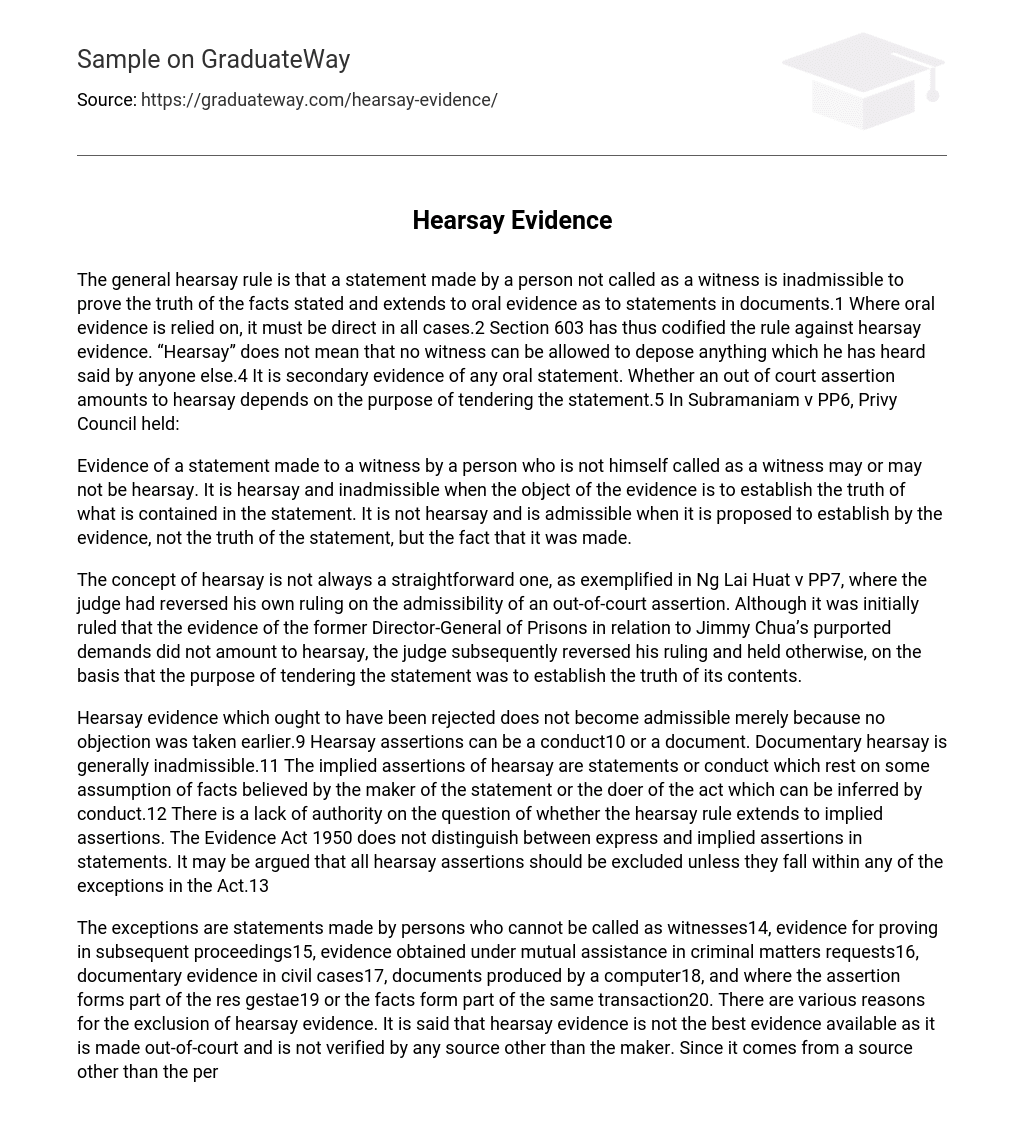The general rule in court is that a statement made by an uncalled witness cannot be used as evidence to prove the truth of the facts stated. This rule also applies to oral evidence regarding statements in documents, as codified in Section 603. However, this does not prohibit witnesses from testifying about something they have heard from someone else. Such testimony is considered secondary evidence of an oral statement and whether it constitutes hearsay depends on its purpose. The Privy Council ruled on this matter in the case of Subramaniam v PP.
Under legal standards, a statement made by a non-witness can be categorized as either hearsay or not. Hearsay refers to evidence that aims to prove the truth of the statement and is inadmissible. Conversely, if the purpose is to establish that the statement was indeed made, rather than its accuracy, it falls outside of hearsay classification and can be admitted.
In the case of Ng Lai Huat v PP7, the complexity of hearsay is evident. Initially, the judge deemed an out-of-court assertion made by the former Director-General of Prisons regarding Jimmy Chua’s alleged demands as not being hearsay. Subsequently, however, the judge reversed their ruling and concluded that the statement qualified as hearsay due to its intention of proving its truthfulness.
Hearsay evidence which should have been rejected does not become admissible solely because no objection was made earlier. Hearsay assertions can be either conduct or a document, with documentary hearsay generally being inadmissible. Implied assertions of hearsay are statements or conduct based on assumptions of believed facts made by the statement’s creator or the individual performing the act, which can be inferred through conduct. There is a lack of authority regarding whether the hearsay rule applies to implied assertions. The Evidence Act of 1950 does not differentiate between express and implied assertions in statements. An argument can be made that all hearsay assertions should be excluded unless they fall within any of the exceptions outlined in the Act.
There are exceptions to the exclusion of hearsay evidence, including:
- Statements made by individuals who cannot be considered witnesses14
- Evidence used to prove in subsequent proceedings15
- Evidence obtained through mutual assistance in criminal matters requests16
- Documentary evidence in civil cases17
- Computer-generated documents18
- Situations where the assertion is part of the res gestae19 or the facts are part of the same transaction20.
Hearsay evidence is often excluded for various reasons. It is argued that hearsay evidence lacks reliability as it is not made within a courtroom and does not have verification from sources other than the person making the statement. Since it comes from someone other than the testifying individual, there is a significant possibility of errors occurring during information transmission. Furthermore, hearsay statements are not given under oath, making their accuracy impossible to confirm. Additionally, cross-examination of the declarant is not possible, further impeding accuracy assessment.
Hearsay is not specifically defined in the Malaysia Evidence Act, but it can be excluded by implication as the Act only allows for the admission of “direct” evidence. For hearsay to be admissible, it must meet the requirements of being legally relevant and falling within one of the exceptions outlined in statute. If it does not meet these exceptions, then consideration must be given to whether it falls under the common law doctrine of res gestae. The Malaysian courts are likely to follow the Privy Council decision in Ratten’s case as precedent and apply it to admit evidence if it can be demonstrated that the statements are reliable and were not fabricated or made in error. While proximity in time and place is a factor to consider, it alone does not determine admissibility; its relevance lies in determining whether there was sufficient time and opportunity to fabricate the evidence.





